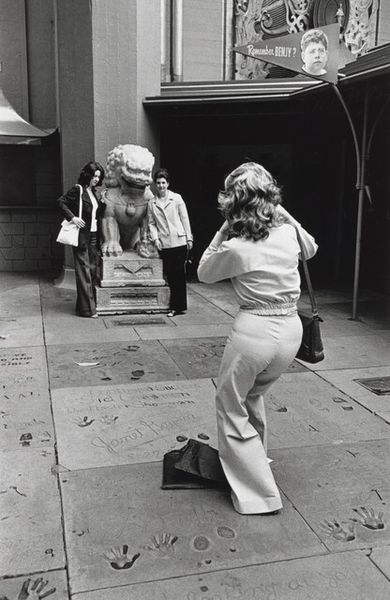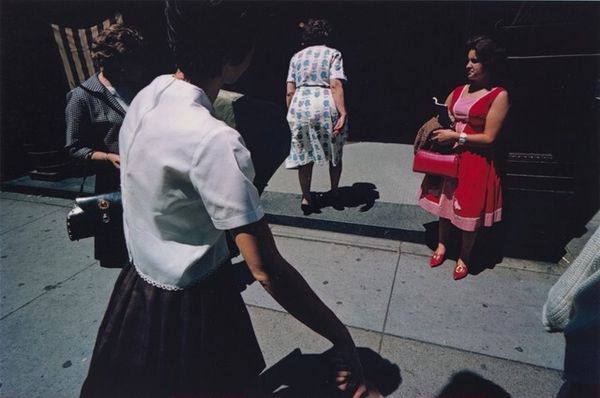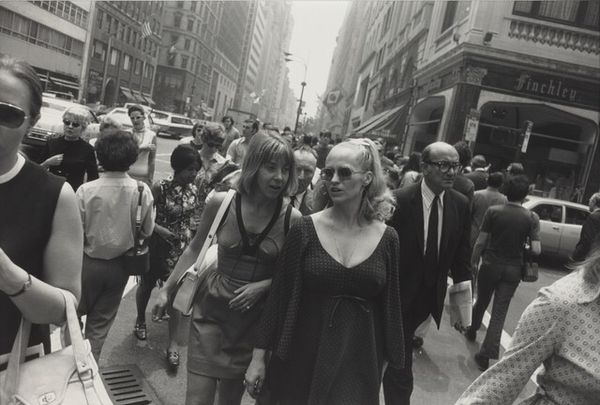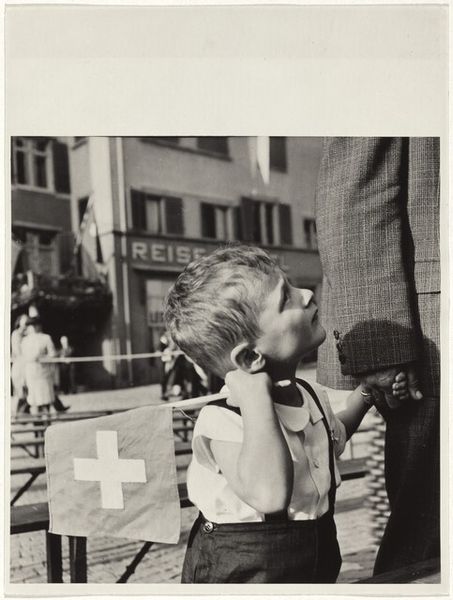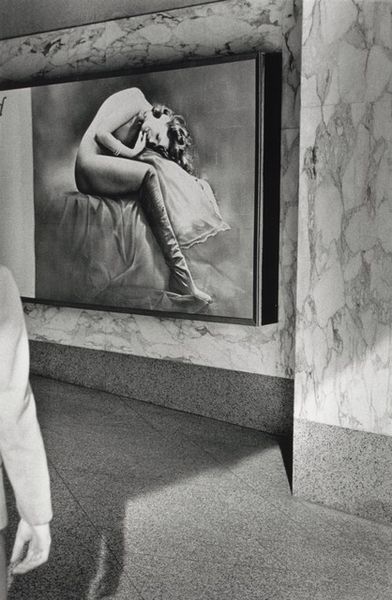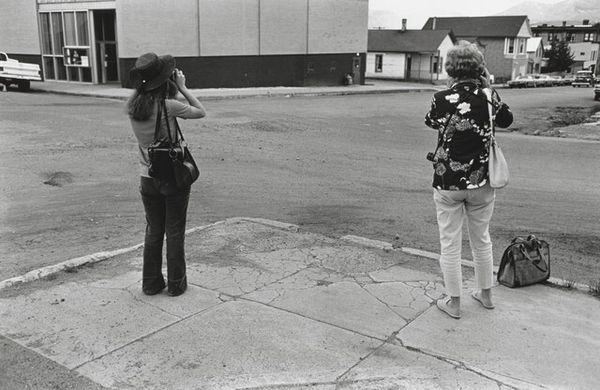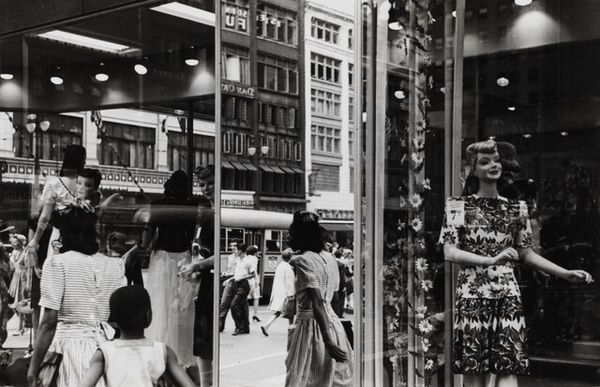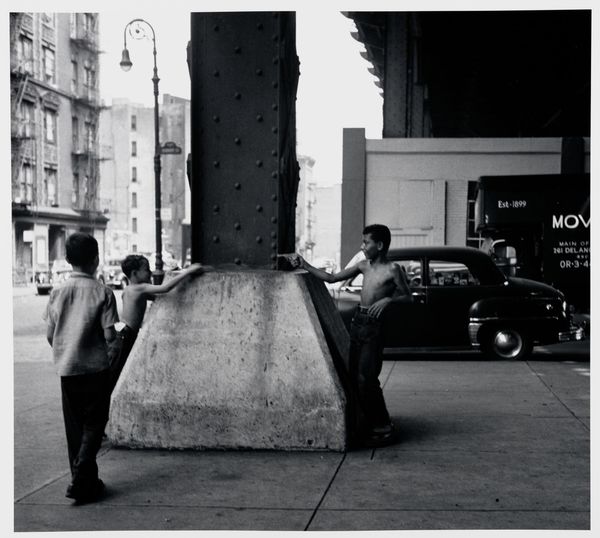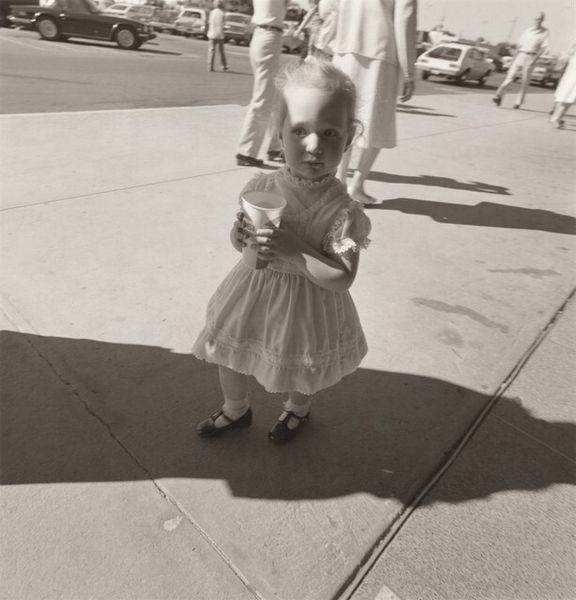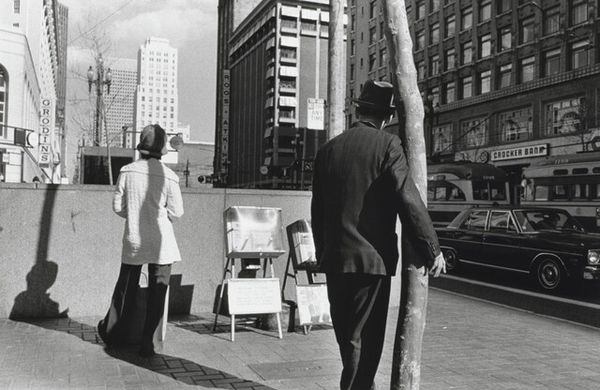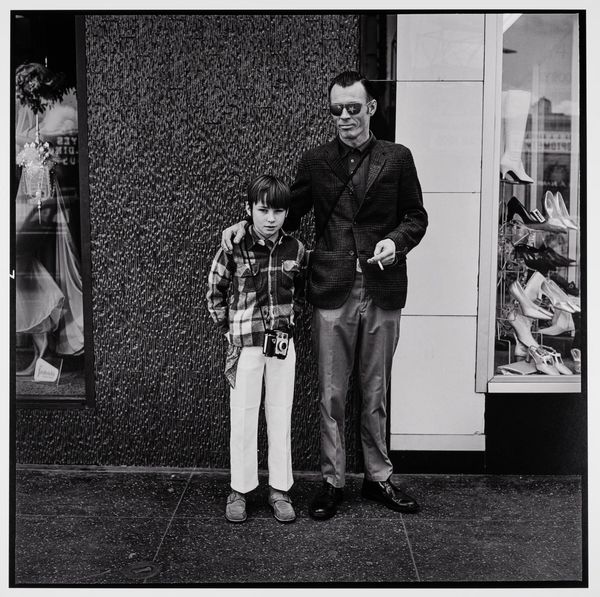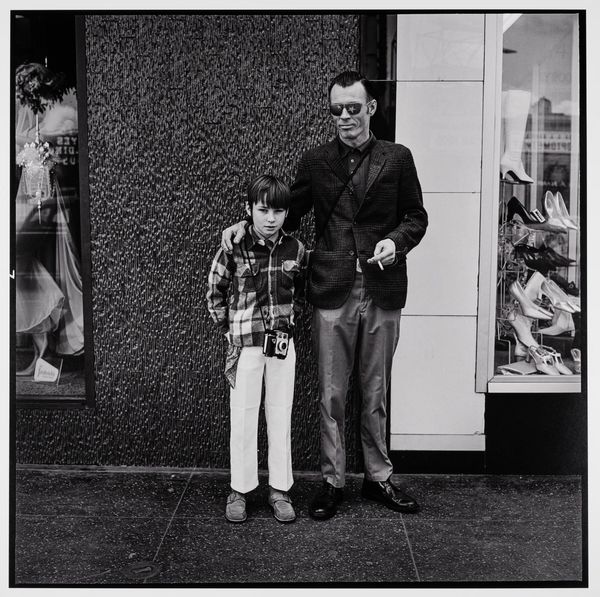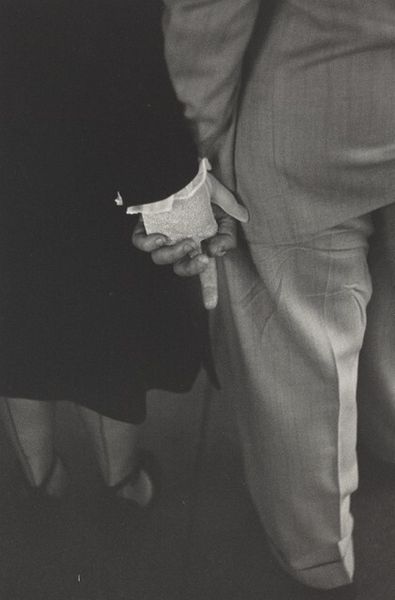
photography, gelatin-silver-print
#
portrait
#
black and white photography
#
postmodernism
#
street-photography
#
photography
#
black and white
#
gelatin-silver-print
#
monochrome photography
#
monochrome
#
realism
#
monochrome
Dimensions: image: 17.78 × 26.85 cm (7 × 10 9/16 in.) sheet: 27.94 × 35.56 cm (11 × 14 in.)
Copyright: National Gallery of Art: CC0 1.0
Curator: This gelatin silver print, entitled "Washington, D.C. #3," was created by Anthony Hernandez in 1975. Editor: It has a curiously intimate feel for a street photograph. I’m immediately drawn to the interplay of textures; the marble of the building versus the sidewalk and the patterned clothing of the women. Curator: Indeed, it’s interesting how Hernandez focuses on the quieter moments of urban life. Consider how this image, rendered in stark monochrome, still manages to communicate a sense of bustling city life with a touch of detached observation. Look closely at the expressions, the attire—what might these figures symbolize about Washington, D.C. at the time? Editor: The contrasting social stratifications on display really drive home the feeling of detached observation. There's a raw elegance in the composition; the deep blacks and bright whites define planes that highlight the subjects in a candid manner. Curator: Precisely. This kind of unposed composition can tell us so much. For instance, note the ‘Dean Witter’ sign in the background—suggesting finance, commerce, but also, perhaps, a certain social stratum juxtaposed with the individuals on the street. Does that speak to the symbolism embedded within the ordinary urban landscape? Editor: Perhaps a nod towards capitalistic enterprise as backdrop, the solid rectilinear forms adding a rhythmic structure against the more organic and fluid forms of the people. The choice to shoot in black and white does add an almost documentarian element, though. Curator: A conscious decision, undeniably. Black and white removes distractions, leaving behind what some call “the truth” or the perceived essence of a moment. In a cultural context, what lasting effects could these stark contrasts carry forward in the psychological narrative? Editor: I find myself questioning how such contrasts define not only space within the image but the experiential space between observer and observed. Ultimately, the starkness reinforces that urban isolation we find ourselves analyzing. Curator: Well observed. I'd suggest anyone drawn to these visual contrasts investigate what other street photography may uncover about our psychological engagement within social fabrics and symbols. Editor: A sentiment to which I'd echo; consider the image not merely as captured reality but an expertly-framed exercise exploring texture and human presence.
Comments
No comments
Be the first to comment and join the conversation on the ultimate creative platform.
